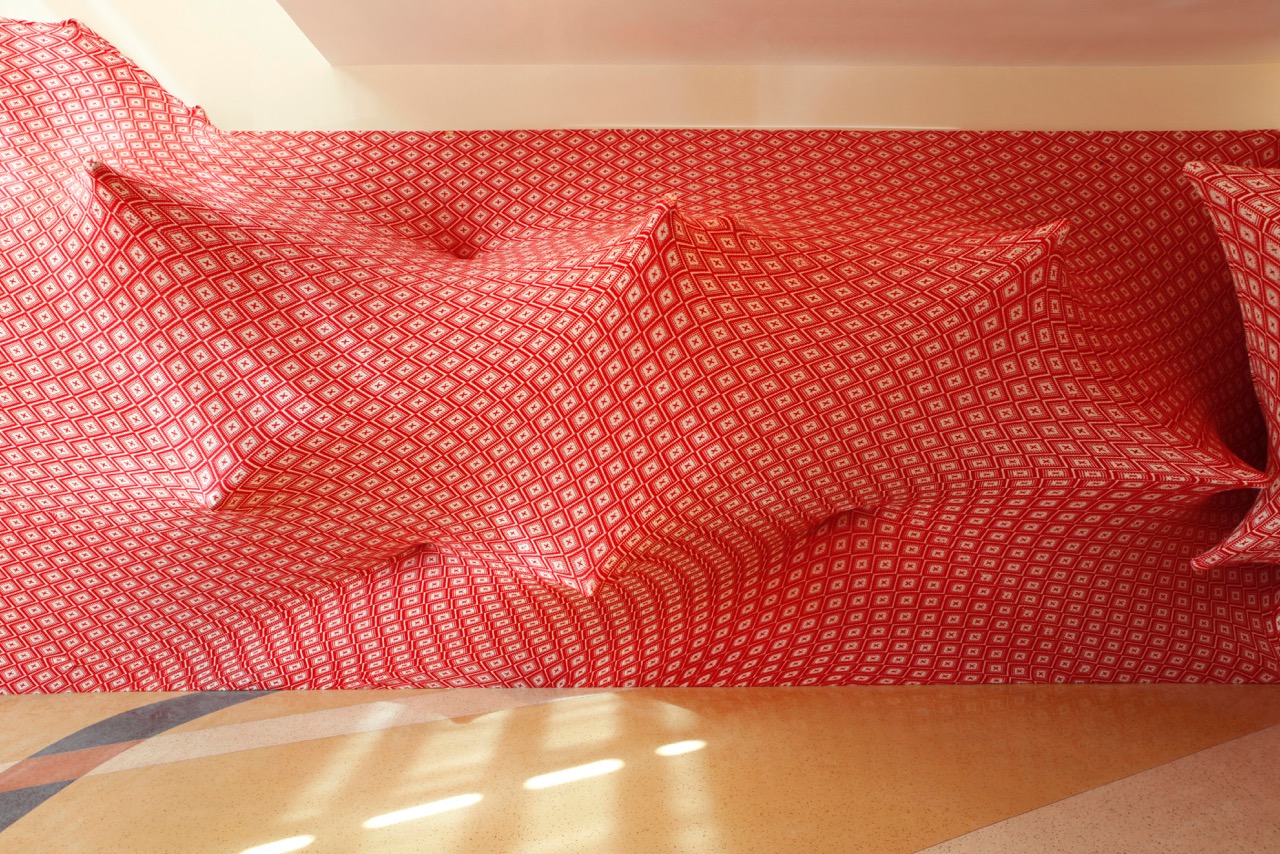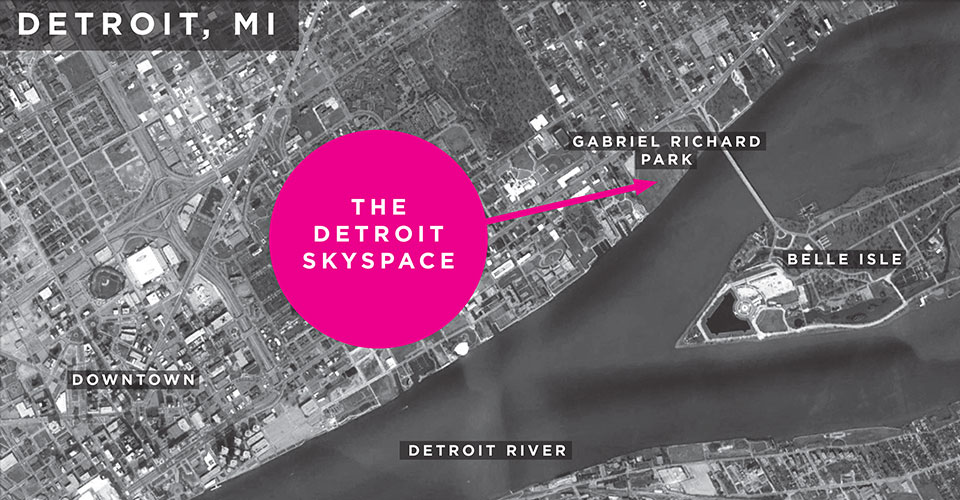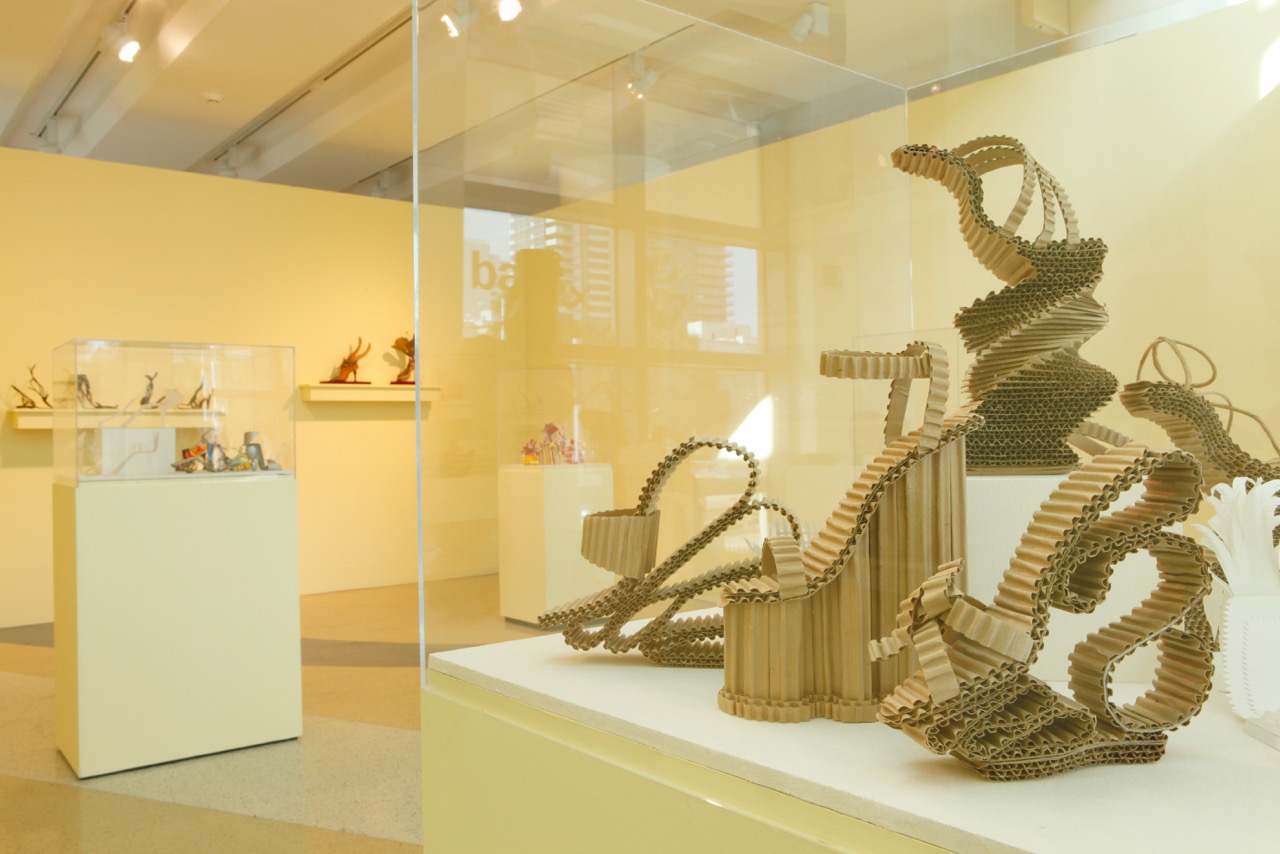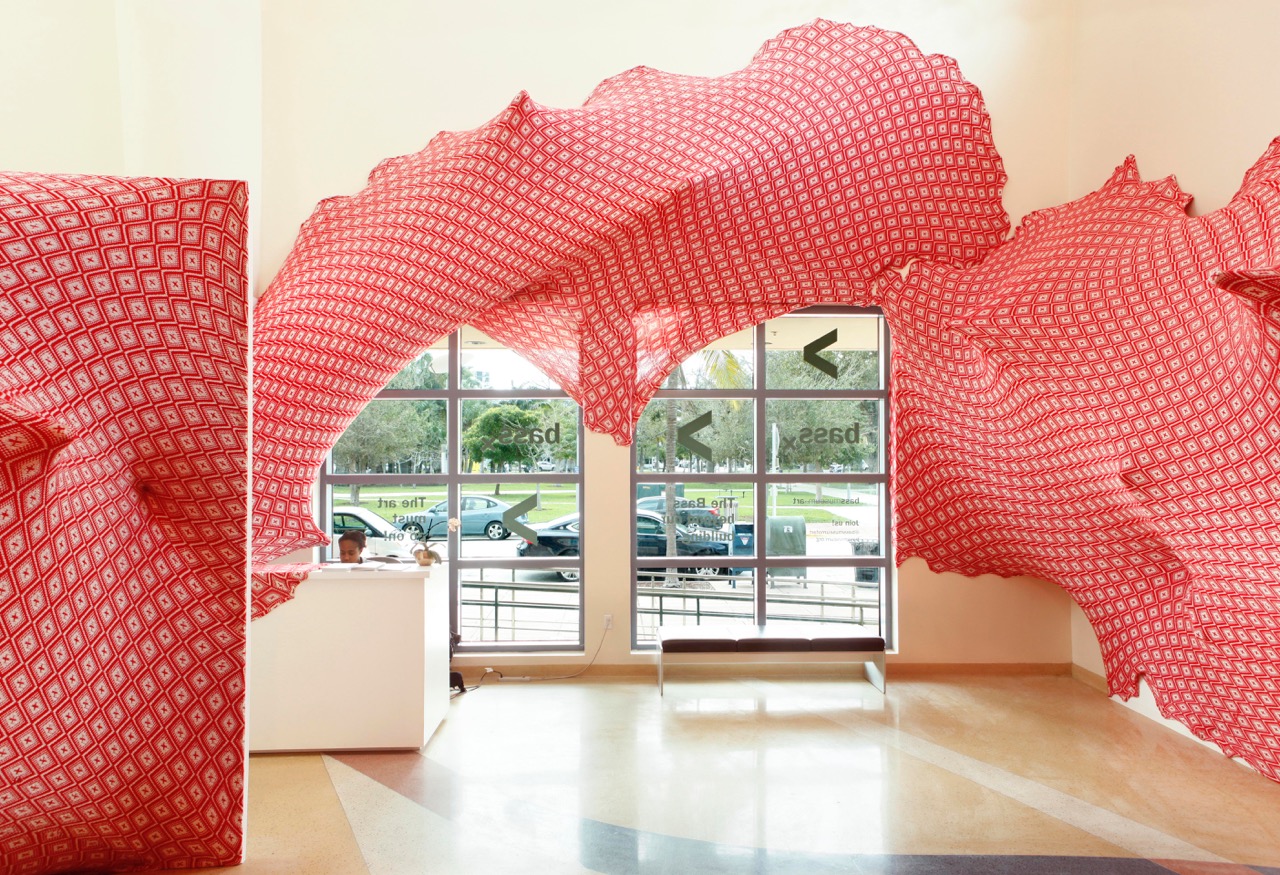
4 tips for artists on working with local governments
Above: Jérémy Gobé, Installation view at bassX in Miami Beach. Photo: Christiaan Lopez-Miro.
This post is part of series on how Knight Arts Challenge winners have taken their arts projects from idea to fruition. You can find the entire series linked below.
The thought of reaching out to, seeking help from, or working with a city agency may induce visions of bureaucratic webs. Certainly, as with any partnership, and especially one that involves the public sector, there can be stumbling blocks. But four Knight Arts Challenge winners have worked their way through the system to build fruitful relationships.
We checked in with four grantees, Miami Beach’s Bass Museum of Art, South Florida-based choreographer Hattie Mae Williams, Detroit’s Skyspace Project and a public art project in St. Paul, to gather insights on how they worked with local governments to pull off their ideas.

The Detroit SkySpace. Map design by Eric McClellan.
1. Pick a partner as excited as you are about the project
Last year on its 50th anniversary, the Bass Museum of Art embarked on a year-long renovation of its Miami Beach facility. But instead of depriving visitors of the museum experience, an ideal collaboration surfaced: bassX, a hybrid concept based primarily in the Miami Beach Regional Library, which happens to be next door. The library now showcases projects, exhibitions, talks and education programs stemming from the museum, and expanding and redefining the library’s role at a time when such institutions are under siege.
The idea for bassX came out of a casual conversation with Michael Spring, head of the Miami-Dade Department of Cultural Affairs.
“From day one, they were so happy that we were going to build a gallery in their lobby,” Silvia Cubiñá, the museum’s executive director and chief curator, said. “And I think that is the most important ingredient: that your partner really must want this to happen. They can’t be halfway. And we’ve had a very excited partner.”
So much so, that what initially emerged as a temporary idea may just grow into something more permanent at the library, Cubiñá said.

Hattie Mae Williams. Credit: Alex Markow.
2. Seek and find the right support
Through her Miami Sites Project, choreographer Hattie Mae Williams took her creativity to specific sites in South Florida with the purpose of showing how spaces could be reclaimed and reintroduced to communities through art, dance, film, music, photography and installations.
In her original proposal, she sought to work with her company on two sites: the Venetian Pool and the Miami Marine Stadium. But, due to what she tactfully describes as “rocks in the road,” only one, the 1963 stadium in Virginia Key, solidified as a project site. Her performance at the stadium was documented in a film she produced, Culture Concrete.
“I got a little tripped up with connecting with people in organizations who were lovely and generous but could not fully assist the project because of their position,” Williams says. “So basically, do the homework and keep on asking who else needs to fully support and see the project to its completion.”
In the end, Williams believes her proposal not only succeeded because it was innovative at the time in South Florida, but also because she developed true partnerships with collaborating organizations.

Art & Sole: Fantasy Shoes from the Jane Gershon Weitzman Collection, installation view at bassX in Miami Beach. Photo: Christiaan Lopez-Miro.
3. Get to know the system so you can work with it
In St. Paul, Knight Foundation awarded over $1 million in grants last year. The news was as sweet as honey for the city and Public Art St. Paul, a private nonprofit that since 1987 has worked to turn the Minnesota capital into a more artistic, ecological, and vibrant city in which to live and work.
Together, they envisioned a project, “Bee Real, Bee Everywhere,” that would make St. Paul a more friendly bee environment, by installing habitats to help combat bees’ dwindling populations, attract them through plantings, and raise awareness of them via small bee sculptures. A prototype will be launched this summer in one of the city’s neighborhoods.
For Colleen Sheehy, president and executive director of Public Art Saint Paul, learning the city’s guidelines and culture has been essential.
“When working with a bureaucracy like the city, we have to follow their policies and procedures, use their contracts, and navigate across many departments,” Sheehy states. “This can make it challenging for artists to interface with the city. There are great benefits to working with local government, so we try to learn the city culture and processes and monitor our communications and schedules to keep our projects on track.”
Her colleague Amanda Lovelee, City Artist for Public Art Saint Paul, agreed.
“As far as local government, understand the system you are working within so that you can know where you to challenge it and help it grow,” Lovelee suggests. “You can’t create change if you don’t understand where you are starting from.”

Jérémy Gobé, installation view at bassX in Miami Beach. Photo: Christiaan Lopez-Miro.
4. Build bridges with the city
Reimagining and reclaiming Detroit is something that Detroit Skyspace aims for.
The project emerged as an initiative of major Detroit booster Toby Barlow and a team of other people who share the same passion and love for their city, to contribute to the ongoing transformation, led by the Detroit RiverFront Conservancy.
They chose a historically-significant site, the Gabriel Richard Park, and commissioned world-renowned artist James Turrell, famous for his light installations, to shape it.
Still in its very early stages, Detroit Skyspace, to be built on public land, is nevertheless a great example of what a city and a non-profit can achieve with a common vision and goals.
“The Skyspace team has from the very beginning made the city of Detroit a partner in this project,” says Felicia Molnar, project manager for Detroit Skyspace. “Their support is seen as integral to the successful outcome of the Skyspace. As the city of Detroit is undergoing its own renaissance in governance, the current administration also sees the advantages in making partners with a well-organized volunteer effort as well as empowering the entrepreneurial spirit that is giving birth to great new visions for the city. Detroit may present a unique and possibly unparalleled situation.”
Recent Content
-
Artsarticle ·
-
Artsarticle ·
-
Artsarticle ·

